Modularity
Mathematics in the 21st century have been transformed in a dramatic way. We could almost say that we are seeing the emergence of a new intelligent being. It is as if all of humanity has connected to form a new being. It is a pity that this transformation only reaches Mathematics.
We are referring to Polymath. The story begins in January 2009. Fields Medal winner Tim Gowers had a problem and instead of trying to solve it alone he wrote a blog post proposing the problem and offering his blog to anyone who had ideas or comments to make. It was a problem Gowers was interested in but saw as complicated. The result was that in less than 40 days he had solved the problem and an even more complicated one. The success has been repeated on numerous occasions since then. This new kind of collaboration makes us think of the network as a new connection, not between neurons, but between brains. The power of mathematicians has been multiplied. For more information, see the book:
Michael Nielsen, The New Era of Networked Science, Princeton University Press, Princeton, 2012.
The result we want to comment on was published in arXiv this Christmas and is the result of a similar collaboration between 10 mathematicians. The difference is that this time it is an invitation-only group.
The theorem they prove is the following:
Theorem. Let \(E\) be an elliptic curve over a complex multiplication field \(F\). Then \(E\) and all its symmetric powers are potentially modular. Therefore the Sato-Tate conjecture holds for \(E\).
The proof is contained in an article of 193 pages. We can explain little about the proof here, we will just try to explain what the content of the theorem is.
There is a precedent for this theorem:
Theorem [Wiles, Taylor-Wiles, 1995]
Any semi-stable elliptic curve over the field of rational numbers is modular.
Famous because it implies the solution of Fermat’s last theorem. The restriction that the curve be semi-stable was removed six years later by Breuil, Conrad, Diamond and Taylor.
We believe that the best way we have to explain this theorem is by exposing a particular case, the minimal expression of a modularity theorem, which is very accessible and does not go beyond the level of an undergraduate student. What is surprising is that the proof in this case depends strongly on the peculiarities of the case. Wiles’ theorem and the one we discuss today are general and their proof requires new ideas.
There are three actors in the subject $$ \text{ Motives — Galois theory — Modular forms } $$ We will first try to explain these three actors in the simple example coming from Smith (Henry John Stephen Smith (1826-1883)) a mathematician too little remembered for his actual relevance.
Motives
In its most rudimentary form a motive is associated with a set of polynomials with rational coefficients. Smith considered a very simple one, the polynomial \(p(x)=x^4-2x^2+2\). We are interested in the number of solutions of the congruence equation \(x^4-2x^2+2\equiv0, \pmod{p}\), for the various primes \(p\). We find the following solutions for the first primes $$\begin{array}{|c|c|c|c|c|c|c|c|c|c|c|c|c|c|} \hline p & 2 & 3 & 5 & 7 & 11 & 13 & 17 & 19&23 & 29 & 31 & 37 & 41 \\ \hline x & 0 & & 2, 3 & & & 3, 10 & & & & 10, 19 & & 9,28 & 16, 19,22,25 \\ \hline \end{array} $$
Since this is a polynomial of degree \(4\) it cannot have more than four solutions. In fact we find that the primes fall into three groups. Those for which \(p(x)\equiv0\) has no solution, those for which it has 2 solutions and those for which it has 4 solutions, counting multiplicities, are: \begin{align*}0 \text{ sol.} &\quad 3, 7, 11, 17, 19, 23, 31, 43, 47, 59, 67, 71, 73, 79, 83, 89, 97, 103, 107, 127, \dots\\2 \text{ sol.} &\quad 5, 13, 29, 37, 53, 61, 101, 109, 149, 157, 173, 181, 197, 229, 269, 277, 293, \dots\\4 \text{ sol.} &\quad 2, 41, 113, 137, 257, 313, 337, 353, 409, 457, 521, 569, 577, 593, 761, 809, \dots\end{align*} The prime \(2\) is special here, it has a unique solution but is of multiplicity \(4\).
This type of problem was first studied by Gauss who gave two criteria for the equation \(x^4-2\).
Theorem [Gauss]. Let \(p\equiv1\pmod8\) be a prime such that \(p=(4a+1)^2+8b^2\). Then \(x^4-2\equiv0\pmod{p}\) has a solution (and then 4 solutions) if and only if \(a\) is even.
Theorem [Gauss]. Let \(p\equiv1\pmod8\) be a prime such that \(p=(4\alpha+1)^2+16\beta^2\). Then \(x^4-2\equiv0\pmod{p}\) has a solution (and then 4 solutions) if and only if \(\beta\) is even.
The type of reasoning used by Smith can be started like this. Suppose the congruence \(x^2=-1\) has a solution modulo \(p\), let us call it \(i\), then modulo that prime one has $$x^4-2x^2+2=(x^2-(1+i))(x^2-(1-i))$$ Moreover \((1+i)(1-i)=2\). The question now is whether \(1+i\) and \(1-i\) are squares modulo \(p\).
Smith’s arguments are intricate, using also Gauss’s previous results, but the remarkable thing about Smith’s result is that he saw for the first time the modular aspect of the problem. In fact it is not possible to explain Smith’s result without looking at the next side of our triangle.
Modular forms
Before explaining what a modular form is, let’s see what Smith found studying the polynomial \(x^4-2x^2+2\). He considered a power series $$f(q)=q\prod_{n=1}^\infty(1-q^{8n})(1-q^{16n}).$$ Following Jacobi’s ideas, it can be seen that $$f(q)=\sum_{n,m\in\textbf{Z}}(-1)^nq^{(4m+1)^2+8n^2}= \sum_{n,m\in\textbf{Z}}(-1)^{n+m}q^{(4m+1)^2+16n^2}.$$ It is easy to obtain from these expressions the first terms of the power series $$f(q)=\sum_{n=1}^\infty a_n q^n=q-q^9-2 q^{17}+q^{25}+2q^{41}+q^{49}-2q^{73}+q^{81}-2 q^{89}-2q^{97}+\cdots$$
The theorem proved by Smith is the following:
Theorem [Smith (1865)]. Let \(N(p)\) be the number of solutions of the congruence \(x^4-2x^2+2\equiv 0\pmod{p}\). When \(p\) is an odd prime number we have $$N(p)=1+\Bigl(\frac{-1}{p}\Bigr)+a_p.$$
Here \((\frac{-1}{p})=1\) if \(p\equiv1\pmod4\) and \((\frac{-1}{p})=-1\) if \(p\equiv3\pmod4\).
Setting \(q=e^{2\pi i z}\) we get a function of \(z\), \(f(e^{2\pi i z})\) which is holomorphic in the upper half-plane \(\textrm{Im}(z)>0\). It is an example of a modular form, which means that it has extraordinary symmetry properties. This means that modular forms are few.
In Smith’s result the vertex ‘Galois group’ is hidden, but we can make it explicit.
Galois group
The Galois group of an equation can be thought of as the permutations of its roots that extend to isomorphisms of the generated field. For the Smith polynomial it is the dihedral group \(D_8\) of order \(8\) defined by the symmetries of a square. $$\{(), (1,2,3,4), (1,3)(2,4), (1,4,3,2), (1,3), (2,4), (1,4)(2,3), (1,2)(3,4) \} .$$
Each symmetry is a linear application in \(\textrm{SL}_2(\textbf{R})\). So we have a representation of the Galois group \(\rho\colon G\to\textrm{SL}_2(\textbf{R})\).
The Galois group also acts on the integers of the number field and their ideals. Thus for every prime there is an element of the Galois group which, modulo \(p\), acts as raising to \(p\). It is the Frobenius \(\tau_p\).
The trace of the image \(\rho(\tau_p)\) coincides with \(a_p\), the coefficient of the modular form \(f\) (except for the prime 2 which is exceptional in this case).
Artin associated to each representation \(\rho\) of the Galois group a function \(L(s,\rho)\) which is defined by a Dirichlet series. And in this case the associated \(L\) function is $$L(s)=1-\frac{1}{9^6}-\frac{2}{17^s}+\frac{1}{25^6}+\frac{2}{41^s}+\cdots$$ which precisely matches the development of \(f(q)\) that we gave before.
We can summarize by saying that the motive is modular and the modular form is associated to a representation of the Galois group.
Wiles theorem
The ”motive” in the case of Wiles’ theorem is an elliptic curve. This is a polynomial of the type \(y^2=ax^3+bx+c\). Here we consider the points of the curve modulo \(p\), \((x,y)\) pairs that satisfy the equation modulo \(p\). The point at infinity of the curve must also be included in the count.
In this case we say that the curve is modular if the number of solutions satisfies $$N(p)=p+1-a_p$$ where the numbers \(a_p\) are the coefficients of a suitable modular form.
Again we have an associated Galois representation and the coefficients \(a_p\) are the traces of the image of the Frobenius at p. What Wiles achieves is to prove that indeed if the curve is semi-stable and with coefficients in \(\textbf{Q}\), then it is modular.
The reason why this has to do with Fermat’s theorem is quite surprising. The coefficients of the elliptic curve determine the level of the modular form that will represent it. On the other hand, modular forms have such amazing symmetry properties that it is easy to limit their number. If \(a^p+b^p=c^p\) with \(p\ge5\) a prime number, Frey had the idea of considering the elliptic curve \(y^2=x(x-a^p)(x-b^p)\). According to the theorems it should have an associated modular form with certain characteristics which, due to the special form of the coefficients, prove to be incompatible.
Sato-Tate conjecture
When an elliptic curve is modular we have \(-2\sqrt{p}\le a_p\le 2\sqrt{p}\). We can define an angle \(\theta_p\) for each prime by means of \(\cos\theta_p=\frac{a_p}{2\sqrt{p}}\). The Sato-Tate conjecture predicts the distribution of these angles for certain elliptic curves (those without complex multiplication). The conjecture says that for \(-1\le \alpha<\beta\le 1\) we have $$\lim_{x\to\infty}\frac{\textrm{card}\{p\le x\colon \alpha\le \theta_p<\beta\}}{\textrm{card}\{p\le x\}}=\int_\alpha^\beta\sin^2 t\,dt.$$ The theorem we are discussing says that the conjecture is true for the elliptic curves involved. For more information see Sato Tate conjecture.
The new Modularity theorem
The new theorem just proved concerns the modularity of elliptic curves with coefficients in fields of algebraic numbers greater than \(\mathbf{Q}\), namely the so-called complex multiplication fields. This means that they are fields \(F=K(\sqrt{\alpha})\), quadratic extensions of another algebraic number field \(K\) such that all the immersions of \(K\) in \(\textbf{C}\) are in fact immersions in \(\textbf{R}\) (we say that \(K\) is totally real), but on the other hand \(F\) only admits complex immersions, that is \(\alpha\) and all its conjugates are negative real numbers.
We must also explain why the curves are now said to be potentially modular. To explain this we must look at an earlier extension of Wiles’ modularity theorem.
This step consists of replacing the field of rational numbers by a totally real field \(K\). Let us see what objects we have to consider on each of the three sides of the correspondence: Motives — Galois theory — Modular forms.
On the motives side, we simply have to consider equations whose coefficients are in \(K\): for example, elliptic curves defined by equations of the form \(y^2 = ax^3 + bx + c\) with \(a, b, c\) in \(K\). On the side of Galois representations, it is also easy: we will consider the Galois group of finite extensions \(F/K\) instead of extensions of the rational numbers. However, on the side of modular forms, it is not so clear which objects will play this role: it will be the Hilbert modular forms. Consider all immersions of \(K\) in the real numbers, \(\sigma_1, \dots, \sigma_m\). A Hilbert modular form is a holomorphic function \(f\) defined on the product of \(m\) copies of the upper half-plane, which satisfies symmetry properties analogous to those of a classical modular form (these symmetries refer to the action of a subgroup of \(\mathrm{SL}_2(K)\), which we can see as a subgroup of the product of \(m\) copies of \(\mathrm{SL}_2(\textbf{R})\) via the \(m\) immersions \(\sigma_1, \dots, \sigma_m\)).
Here a key idea comes into play: for every number field \(K\), it makes sense to consider motives on \(K\), Galois representations on \(K\), and (Hilbert) modular forms on \(K\). But we can relate these objects for different fields \(K\): this is the idea of base change. If \(K’\supset K\) is another totally real field, a motive on \(K\) can also be seen as a motive on \(K’\) (an equation with coefficients in \(K\) also has coefficients in \(K’\)), for a Galois extension \(M/K\), the Galois group \(\textrm{Gal}(M/K)\) contains a subgroup \(\textrm{Gal}(M/K’)\) (provided \(M\supset K’\)), and there is also a base change operation between Hilbert modular forms. Now, for many applications (such as the Sato-Tate conjecture for elliptic curves), if we have a motive (or a Galois representation) on \(K\), it is sufficient to see that there exists a totally real field \(K’\supset K\) such that, viewed as an object on \(K’\), it is modular. This is what is known as potentially modular: although we do not know whether or not the object is modular over the base field, we can say that, after making a sufficiently large change of basis, the object we will have is modular over a new totally real field.
Around 2010 it was proved that any elliptic curve \(E\) over a totally real field \(K\) is potentially modular, following the ideas of Taylor and Kisin (see Buzzard’s survey).
Finally we come to the theorem that concerns us today: any elliptic curve \(E\) over a field of complex multiplication \(F\) is potentially modular. Again, it is easy to make the leap from a totally real field to a field of complex multiplication on the side of motives and Galois representations. On the modular forms side, instead of Hilbert modular forms one has to consider automorphic representations of the group \(\textrm{GL}_2\) (we have discussed this in more detail in another blog post: Robert P. Langlands: Abel prize 2018). Once we have objects on all three sides over the field \(F\), we can again perform base change: if \(F’\supset F\) is another complex multiplication field, we can view objects over \(F\) as objects over \(F’\), and we will say that a motive (or a Galois representation) over \(F\) is potentially modular if there exists a complex multiplication field \(F’\supset F\) such that, viewed as an object over \(F’\), it is modular.
Scholze’s work, which has earned him the Fields Medal in 2018, ‘Transforming arithmetic algebraic geometry on \(p\)-adic fields by means of the introduction of perfectoid spaces, with applications to Galois representations and the development of new cohomology theories’, is a crucial advance for the proof of the potential modularity of elliptic curves over complex multiplication fields. His results allow the formulation of a strategy for the proof, and in the article we are focusing on today, the ten authors carry out this strategy.
The team
The team is composed of 10 relatively young mathematicians, we will date their Ph. D. to note this fact. As one of the authors (Frank Calegari) says: In a paper of almost 200 pages, which proves a few beautiful theorems, there is quite a lot of credit to be distributed among 10 different authors, and the youngest authors of this paper did more than their fair share of the work.
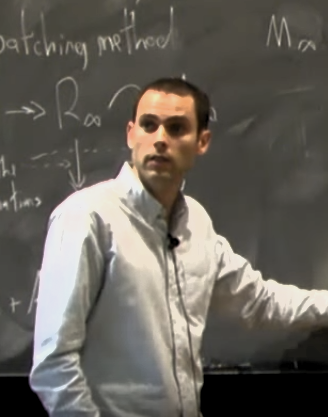

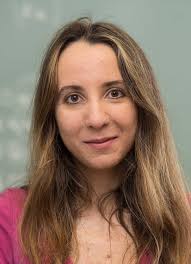
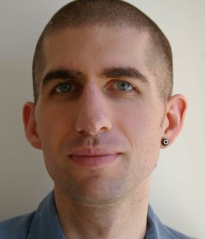
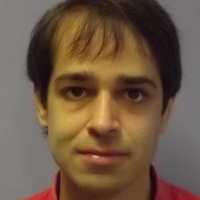
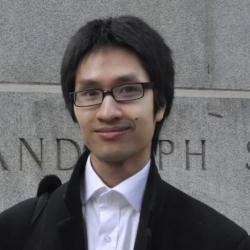
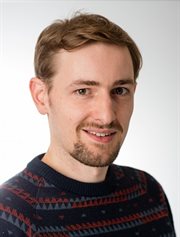
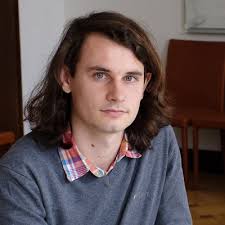
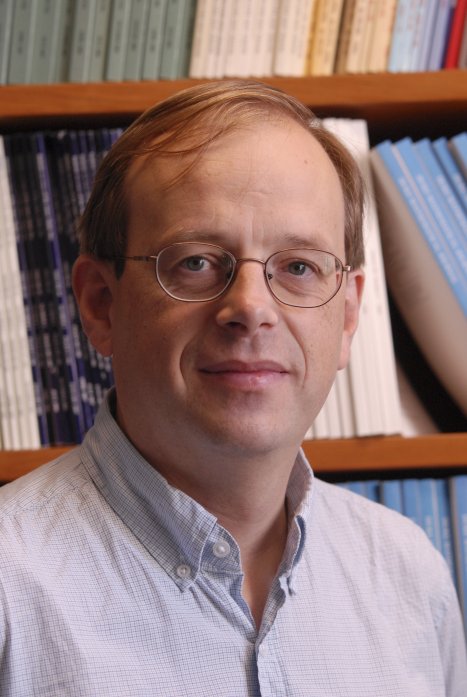
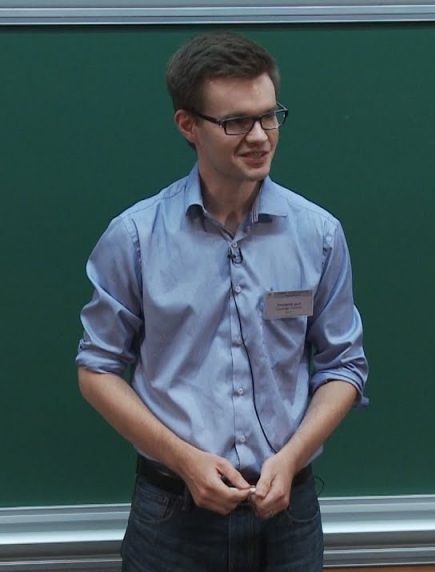
Learn more
The ten-author article:
Patrick B. Allen, Frank Calegari, Ana Caraiani, Toby Gee, David Helm, Bao V. Le Hung, James Newton, Peter Scholze, Richard Taylor, Jack A. Thorne, Potential automorphy over CM fields, arXiv:1812.09999.
We have taken some elements from the excellent book
Carlos J. Moreno, Samuel S. Wagstaff, Jr., Sum of Squares of Integers, Chapman and Hall/CRC, 2005.
For more information on potential modularity, please see the survey
Kevin Buzzard, Potential modularity — a survey, arXiv:1101.0097 . Non-abelian fundamental groups and Iwasawa theory, 188–211,
London Math. Soc. Lecture Note Ser., 393, Cambridge Univ. Press, Cambridge, 2012.
The blog of one of the authors has several entries on the topic we have used in our post:
New Results in Modularity, Part I. New Results in Modularity, Part II. New Results In Modularity, Christmas Update.
Lectures:
Patrick Allen, Potential automorphy of some compatible systems over CM fields, youtube (7 de noviembre de 2017)
Richard Taylor, Potential Automorphy, youtube (4 de octubre de 2010).

Leave a Reply